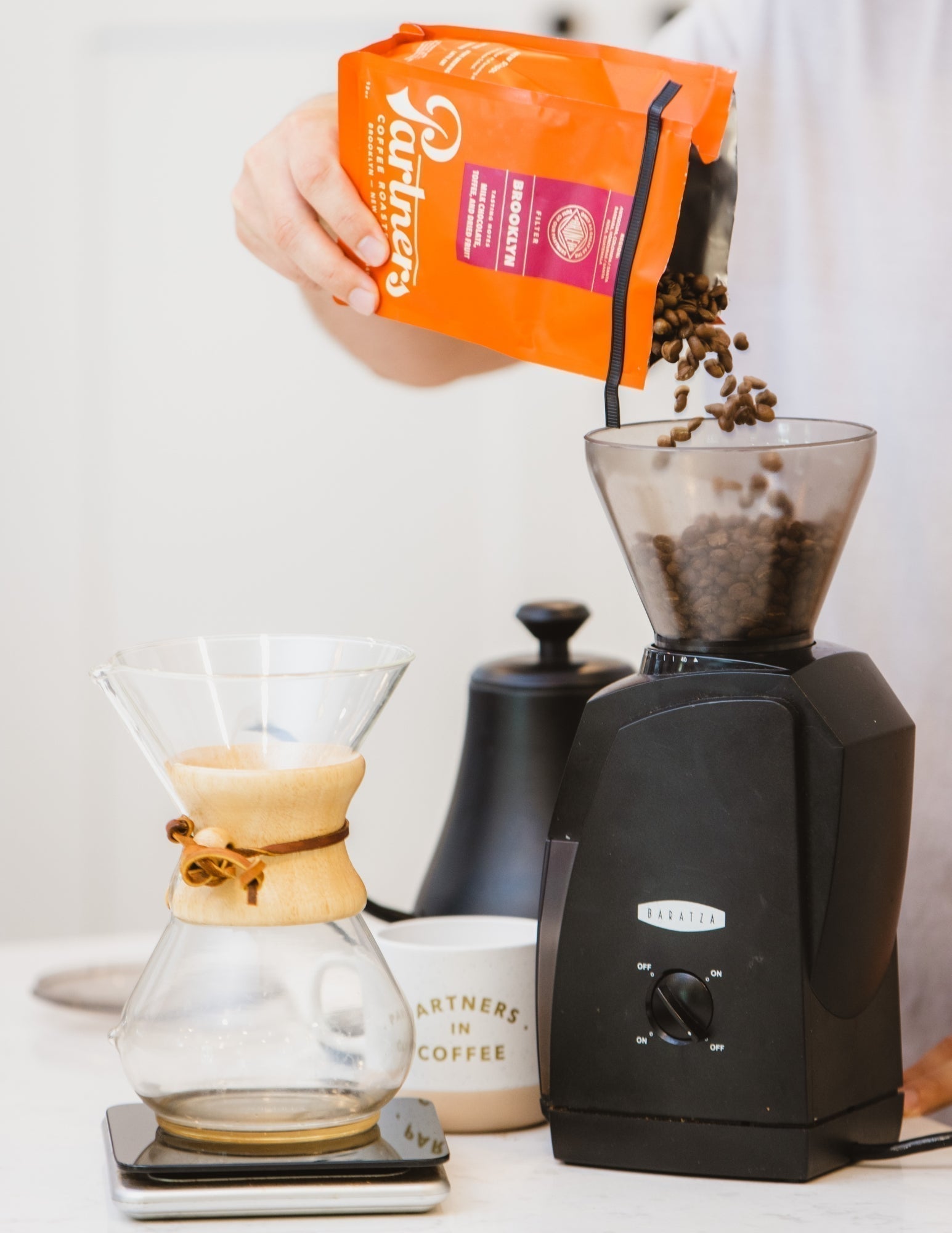As a visitor to Gahahe, you'd be lucky to land in the city of Bujumbura in the hours just before sundown. The international airport lies in a sunbaked plain along the northern shore of Lake Tanganyika—from there, it's around two hours by car to Kayanza, where some of the country's best coffees are grown. In the rearview you'll see glimpses of the city, the lake, and the Democratic Republic of the Congo in the distance; on the dim roadside, frequent tiny junctions alive with commotion; and on the horizon, innumerable stars and galaxies. The reward is then to arrive at Gahahe, your surroundings pitchblack save for taillights carrying the last of the day's coffee deliveries. The washing station is just off the road, and seeing it at night is something magical.
Return in the daytime, and what you'll see is a very modest washing station. The main building is little more than a reception area, a chain-driven depulper, and a half dozen concrete fermentation tanks. Uphill from the station is one of the region's famous red clay brickyards, and downhill, twenty-something rows of simple, rustic drying tables constructed of wood and chicken wire.
Burundi began to focus on specialty coffee production in 2008 while rebuilding an economy devastated by civil war. In the years following, bureaucracy has imposed some of the most significant constraints on quality and traceability. Otherwise, the conditions here are excellent for coffee production. Nearly 100% of the coffee cultivated is heirloom red bourbon, and the weather is generally favorable for washed and natural process coffees alike.
The farms here are incredibly small—a hectare or two at most—with an average of only 250 coffee plants. Coffee will ripen gradually throughout the harvest, so what you'll see is farmers making frequent, small deliveries, carried by hand or balanced on the seat of a bicycle, to central washing stations or to more remote collection points. A finished lot represents the combined work of an entire community.
After each day's coffee deliveries are received at Gahahe, the fruits are separated into high and low densities and mechanically depulped. The high density coffee is dry fermented for 10-12 hours. Clean water is added and fermentation continues for another 14-16 hours. Once the fermentation stage is complete, the resulting parchment coffee is vigorously washed in concrete channels to remove any remaining mucilage. These channels serve an additional function of separating the coffee once again, this time into five different densities. The coffee is then moved according to its density to raised drying tables where it dries in two to four weeks. The highest density coffee is further hand-sorted to create station-specific specialty lots such as this.
We've partnered with Sustainable Harvest to commit a portion of what we paid for this coffee to the Kahawatu Foundation's livestock project, which distributes animal livestock—usually goats—to coffee farmers in Burundi. Groups of 30 farmers are given 10 females and a male plus animal husbandry education, and farmers distribute offspring within their group until each member receives their own. The program is designed to generate additional sources of food and fertilizer and the potential for additional, ongoing cash income.
The livestock project is meant to address challenges related to the structure of Burundi's coffee market—the small-scale of individual farms and the homogenizing effect of centralized coffee processing. By supplementing normal cash premiums with additional contributions in-kind, the project makes it possible to make a meaningful impact on the livelihoods of coffee farmers on an individual level.








Leave a comment
This site is protected by hCaptcha and the hCaptcha Privacy Policy and Terms of Service apply.